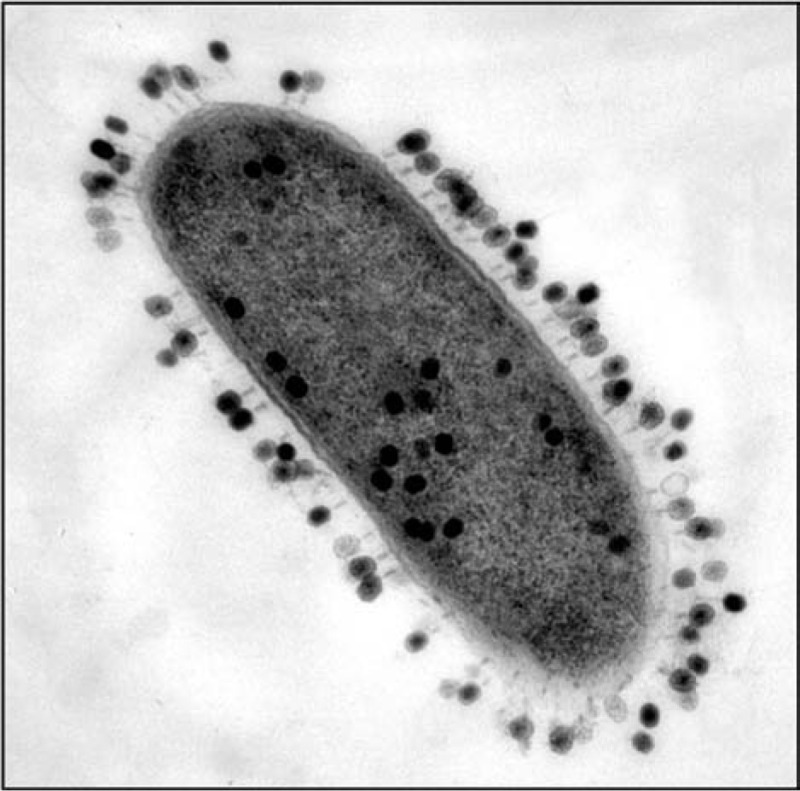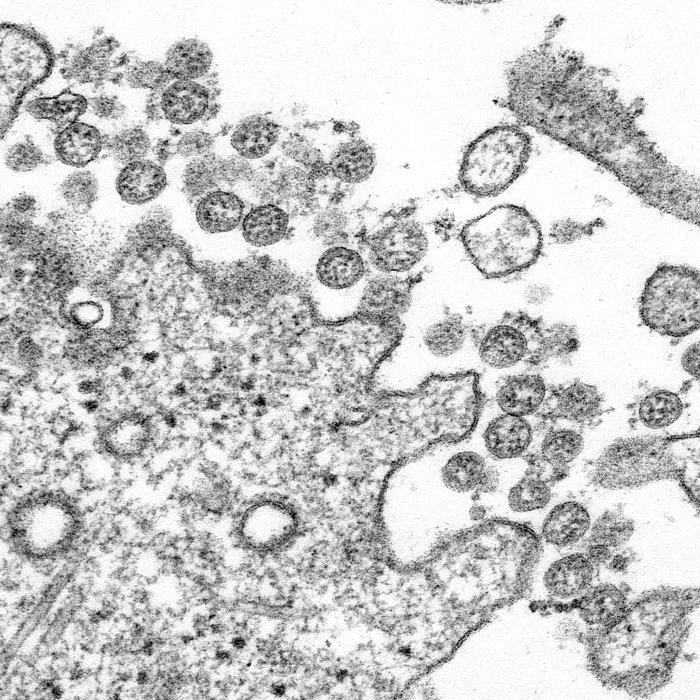What are the 4 types of infection?
First of all, what is an infection? Infections are due to germs. Germs are small living organisms (animals).
They are a part of everyday life and are found in our air, soil, water, and in and on our bodies. Some germs are helpful, others are harmful.
An infection occurs when germs enter the body, and increase in number. An infectious disease is when an infection causes a reaction in the body that makes you unwell.
Many germs live in and on our bodies without causing harm. And some even help us to stay healthy. A small portion of germs are known to cause infection.
Back to infection and infectious diseases.
So. What are the 4 types of infectious disease?
We will now go through them.
1. Bacteria
Bacteria are microscopic single-celled organisms that thrive in diverse environments, all over the planet. The entire organism consists of a single cell with a simple internal structure. They can live within soil, in the ocean and inside the human gut. Humans’ relationship with bacteria is complex.
Sometimes they lend a helping hand, e.g. by curdling milk into yogurt, making cheese, or helping with our digestion. At other times they are destructive, causing diseases like the examples below.
Examples of bacteria that cause disease
- Clostridioides difficile (‘C. diff’) – a type of bacteria in your intestines that’s normally harmless. However, using antibiotics or having an weakened immune system can cause overgrowth of these bacteria. This leads to a gastrointestinal infection that causes an inflamed colon and diarrhoea
- Escherichia coli (‘E. coli’) – commonest cause of UTIs
- Heliobacter pylori (‘H. pylori’) – causes stomach ulcers and chronic gastritis (inflammation of the stomach)
- Legionella pneumophila – causes Legionnaires’ Disease (often a pneumonia). The most common form of transmission is from contaminated water; especially related to air conditioning and water systems (e.g. hotels, swimming pools and spas)
- Methicillin-resistant staphylococcus aureus (MRSA) – a bacteria that is resistant to common antibiotics like penicillin, amoxicillin and methicillin. Outside of healthcare facilities, MRSA is often harmless or causes a skin infection. Inside healthcare facilities, MRSA infections can be are serious and may lead to death
- Mycobacterium tuberculosis – tuberculosis is a contagious disease caused by the Mycobacterium tuberculosis bacteria. It can leads to long term lung infection
- Streptococcus pyogenes (or ‘Strep A’). This is the bacterium that causes ‘strep throat’. It can cause other infections including scarlet fever, impetigo, acute glomerulonephritis and rheumatic fever.

An Escherichia coli (‘E. coli’) bacterium
More on bacteria here.
2. Viruses
Viruses are very tiny organisms, smaller than bacteria. They are made of genetic material inside of a protein coating. Viruses cause familiar infectious diseases such as the common cold, COVID-19 and warts.
They also cause severe illnesses such as HIV/AIDS, smallpox, and Ebola.
Viruses are like hijackers. They invade living, normal cells and use those cells to multiply and produce other viruses like themselves.
This can kill, damage or change the cells and make you sick. Different viruses attack certain cells in your body such as your liver, respiratory system or blood.
When you get a virus, you may not always get sick from it. Your immune system may be able to fight it off – like the common cold.
For most viral infections, treatments can only help with symptoms while you wait for your immune system to fight off the virus.
Antibiotics do not work for viral infections.
There are antiviral medicines to treat some viral infections but they are not always that effective.
Vaccines help prevent you from getting many viral diseases.
Examples of viruses that cause disease
- Herpes simplex virus (HSV). ‘Cold sores’; encephalitis,which is an inflammation of the brain, usually caused by a viral infection. It’s a rare but serious condition.
- Human immunodeficiency virus (HIV). Acquired immunodeficiency syndrome (AIDS) is a long-term condition caused by this virus
- Human papillomavirus (HPV). This is a common sexually transmitted disease (STD) and can cause certain cancers (e.g. cervical) and genital warts
- Influenza viruses. One of causes of influenza (‘flu’). The symptoms of flu are similar to a very bad cold. They include a high temperature, an aching body, tiredness and a headache
- Measles morbillivirus (MeV; also called measles virus, MV) – causes measles. The main symptom is a red-brown blotchy rash. It usually gets better of its own accord. But it can be serious in some people
- Poliovirus. Poliomyelitis. This virus can infect the spinal cord, causing inability to move parts of the body (paralysis) and in some cases can become life threatening
- Rabies lyssavirus. Rabies – is a rare but very serious infection of the brain and nerves. It’s usually caught from the bite or scratch of an infected animal, most often a dog
- Rhinoviruses. They are the most common viruses in humans; and are the predominant cause of the common cold
- Severe acute respiratory syndrome coronavirus 2 (or SARS-CoV-2). This is the cause of COVID-19.

Electron microscopic image of an isolate from the first U.S. case of COVID-19
More on viruses here.
3. Parasites
A parasite is an organism that lives on or in a host. It gets its food from, or at the expense of, its host.
Parasites can cause or transmit disease in humans termed as a ‘parasitic disease’, ‘parasitic infection’, or ‘parasitosis’. Many parasites do not cause disease – i.e they live with us without harming us, and and vice versa (this is called symbiosis).
Infestation refers to parasitic diseases caused by lice, fleas, ticks, and some mites, that live on a host.
3 groups of parasites that cause disease
- Protozoa – are single-celled organisms that can multiply in humans. These parasites can spread through contaminated food and water, person-to-person contact, and insect bites. Protozoa include Plasmodium malariae (and other types), which causes malaria infection, and Cryptosporidium, which is ingestible
- Helminths – are worms that often root in a person’s gastrointestinal tract. These parasites cannot multiply or divide within a human body and eventually pass through a person’s stool. These include Ascaris lumbricoides and hookworms
- Ectoparasites – are small organisms that live on the outside of the body. These include ticks, fleas, and lice (including head lice).
Plasmodium falciparum malaria, showing infected red cells and a neutrophil (white cell) consuming infected cells
4. Fungi
A fungus is a primitive organism. Mushrooms, mould and mildew are examples. Fungi live in air, in soil, on plants and in water. Some live in the human body. Only about half of all types of fungi are harmful.
Some fungi reproduce through tiny spores in the air. You can inhale the spores or they can land on you. As a result, fungal infections often start in the lungs or on the skin. You are more likely to get a fungal infection if you have if you have a weakened immune system or take antibiotics.
Examples of fungi that cause disease
- Tinea pedis (Athletes’s foot)
- Ringworm (not a worm)
- Aspergillosis
- Histoplasmosis
- Coccidioidomycosis
- Candida albicans (a yeast).

 Aspergillus causing pneumonia
Aspergillus causing pneumonia
Routes of entry for infection
 These are the main ways infection get inside you.
These are the main ways infection get inside you.
Summary
We have described what are the 4 types of infection. We hope you understand them better now.

